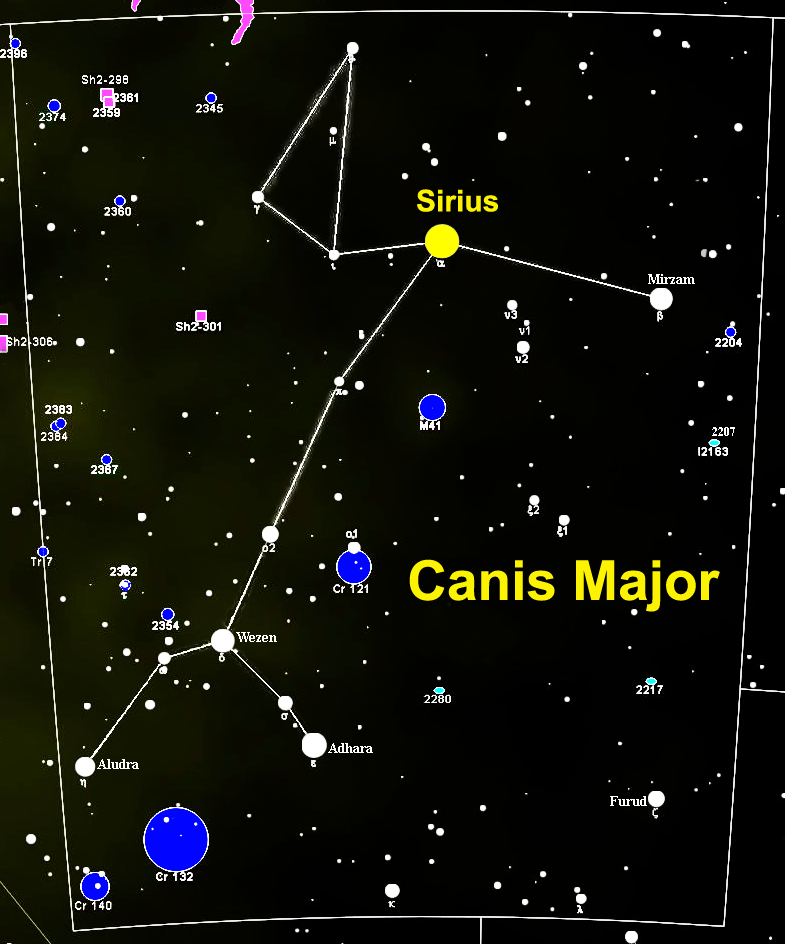COSMIC CATS & DOGS at LUGHNASADH

While the sun – our closest and most important star – may be in the feline sign of Leo, the ancients were very focused on the movement of a canine star, Sirius, otherwise known as the Dog Star because of its prominent position in the constellation Canis Major.
As the brightest star in the sky, the appearance of Sirius (meaning ‘searing’, ‘glowing’, or ‘scorching’) rising in the morning marked the hottest – and often most oppressive – days of summer. The ancients thought that the brightness of Sirius intensified the heat of the Sun, and so these days were named the “dog days of summer”. On the other hand, northerners generally consider the “dog days of summer” the waning or last days of summer (this is my personal association with the term), which may not always coincide with the hottest days. More on this below.
In ancient Egypt, the heliacal rising (first appearance in the eastern morning sky) of Sirius also coincided with the annual flooding of the Nile. This meant a lot of hard work and sacrifice, but also ensured the fertilization of the land to feed the people. Mythologically, the flooding of the Nile was caused by the tears of Isis, who was mourning the death of her husband, Osiris*. In the same mythology, the Dog Star was thought to be Anubis – the jackal-headed god and guide of the dead – ensuring safe passage to the next realm. Hence, Sirius came to be associated with pain and sacrifice, along with hope for life to renew again.
Obviously, modern science tells us that while Sirius is significantly brighter than our sun, it is also much farther away. Its heat does not reach Earth. However, the energetic resonance of the “dog days” remains consistent despite the fact that the actual start date (i.e. date of the heliacal rise of Sirius) varies. There seems to be a general consensus to term the days between July 3 and Aug 11 the “dog days of summer” (blame the Farmer’s Almanac for that tidy bit of misinformation) but, as with the seasons and weather, the true “dog days of summer” depend on location, location, location…specifically latitude.
For us here in the GVRD (49°N) this would be around Aug 20
For the GTA (44°N) this would be around Aug 15
For Cairo, Egypt (30°N) this would be around Aug 1
So, whether the dog days of summer highlight the hot days or end days of summer, the energies of Lughnasadh are ever present.
*Osiris is the Egyptian God who is slain (Lughnasadh), then resurrected (Mabon) to become the Lord of the Underworld (Samhain).
